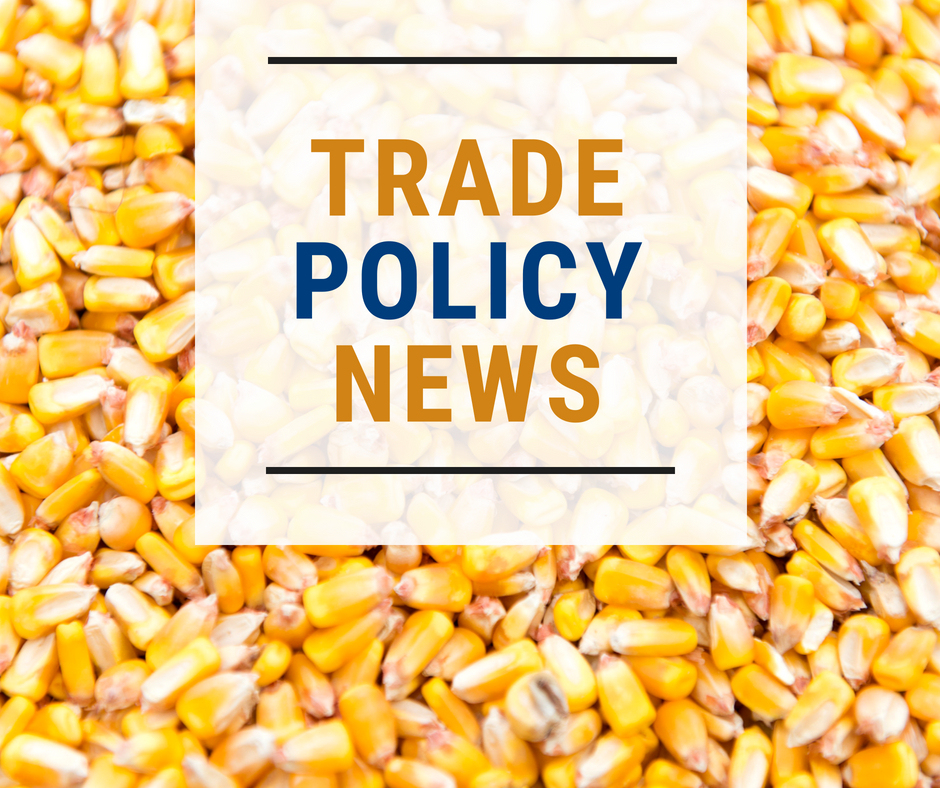The United States and Mexico announced on Monday a preliminary U.S.-Mexico Trade Agreement that modernizes provisions of the existing North American Free Trade Agreement (NAFTA), clearing a major hurdle toward a new, trilateral trade agreement with two of the largest buyers of U.S. coarse grains and co-products.
The new agreement came after five weeks of intensive negotiations in Washington between U.S. and Mexican officials. While Canadian officials have not been involved in the recent talks, Canadian Foreign Minister Chrystia Freeland is in Washington, D.C., at press time, working with her counterpart, U.S. Trade Representative Robert Lighthizer, to hammer out an agreement that would allow the northern neighbor to join the new pact.
“We are grateful for news today that the United States and Mexico have reached an agreement that will keep NAFTA modernization efforts moving,” said U.S. Grains Council President (USGC) and CEO Tom Sleight in a statement about the announcement on Monday. “This agreement is a major step forward for our relationship with Mexico and is a result of hard work over the last year to closely examine our vital partnership.”
The U.S.-Mexico agreement would benefit American farmers, ranchers and agribusinesses by maintaining key provisions of the existing NAFTA and expanding access, notably through technical exchanges.
The agreement would:
- keep existing tariffs at zero on agricultural products traded between the United States and Mexico, critical for the U.S. grains industry that counts Mexico as the top international customer for U.S. corn and distiller’s dried grains with soluble (DDGS) and a key buyer of U.S. sorghum and barley.
- enhance rules for science-based sanitary and phytosanitary (SPS) measures beyond even what was included in the now-defunct Trans-Pacific Partnership (TPP), which itself further enhanced commitments at the World Trade Organization (WTO). Most importantly, the agreement would establish a new mechanism for technical consultations to resolve issues between the parties.
- include foundational language that specifically addresses innovations in agricultural breeding technology, again going farther than the TPP text.
- include measures aimed at reducing the use of trade-distorting policies and ensuring fair treatment in grading and standards for agricultural products.
Negotiators managed to avoid several so-called “poison pills,” including a seasonality produce proposal that could have impeded trade and created a risk of retaliatory action. The agreement also discarded the idea of a sunset clause in favor of authoring a 16-year agreement that will be subject to a review in six years.
Some provisions are still unclear as text is not yet fully released, including the outcome of investor-state dispute resolution provisions that protect U.S. investors from mistreatment; Chapter 19 provisions for reviewing anti-dumping (AD) or countervailing duties (CVD) cases; and harmonization of renewable fuel standards.
The Trump Administration has indicated its intention to notify the U.S. Congress of a new agreement on Friday, Aug. 31, with or without Canada, which will largely determine the next steps in the political and legal processes toward a fully revised NAFTA.
One potential complication is President Trump’s continual threats to withdraw from the existing agreement, including during the press conference announcing the new U.S.-Mexico agreement. Another is that there is no final agreement on Section 232 steel and aluminum tariffs on Canada and Mexico, which must be resolved before either will sign on to a new deal.
“Mexico is extremely important to every sector we represent. Yet, so too is Canada, our second largest ethanol market and a top ten corn market,” Sleight said. “We hope the agreement today opens the door for Canada’s re-engagement, and we continue to oppose withdrawal from the existing NAFTA under any circumstances except the adoption of a new, beneficial and trilateral pact.”
The Council has been involved in the NAFTA modernization negotiations since they began last year, with the priority of achieving an agreement that ensures market access to both major markets for U.S. coarse grains and ethanol.
Past coverage of the talks is available here.
About The U.S. Grains Council
The U.S. Grains Council develops export markets for U.S. barley, corn, sorghum and related products including distiller’s dried grains with solubles (DDGS) and ethanol. With full-time presence in 28 locations, the Council operates programs in more than 50 countries and the European Union. The Council believes exports are vital to global economic development and to U.S. agriculture’s profitability. Detailed information about the Council and its programs is online at www.grains.org.

